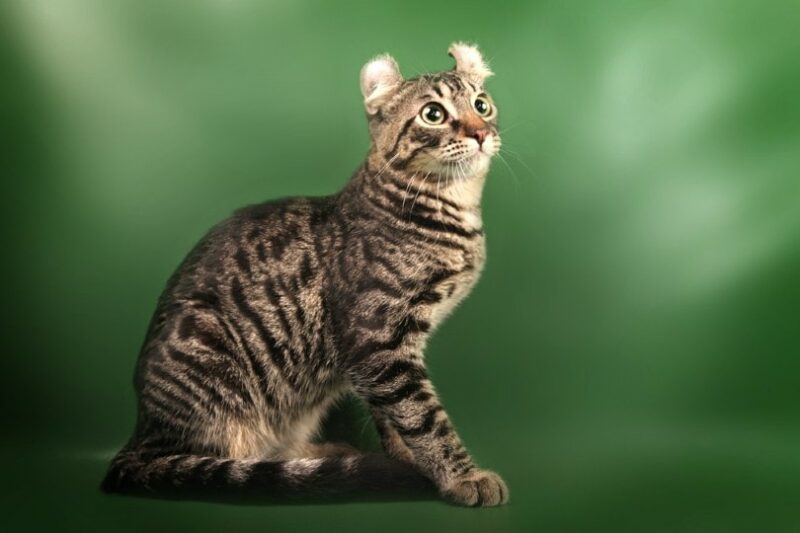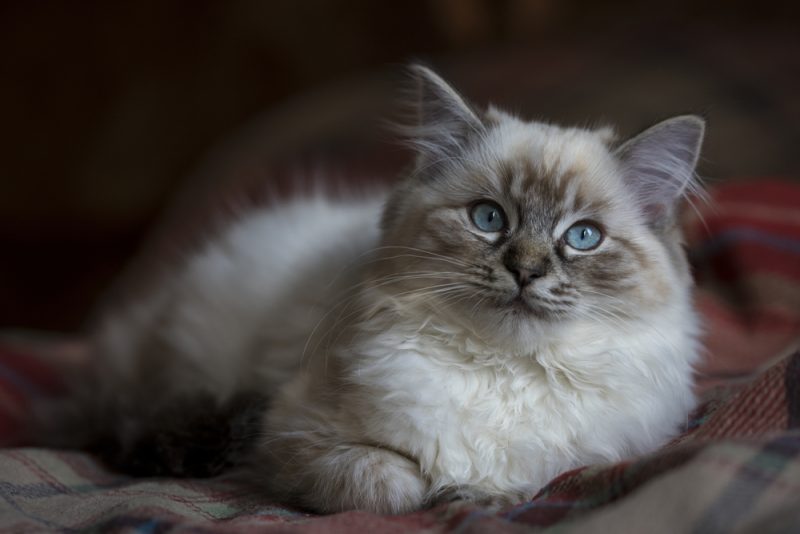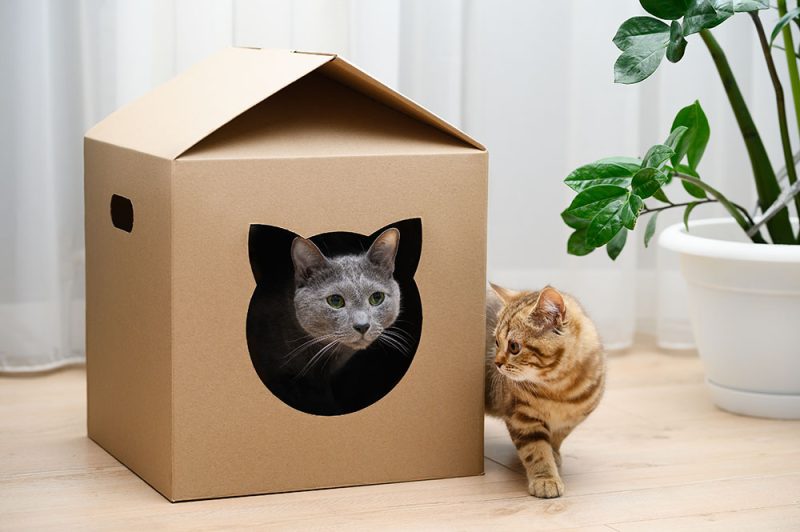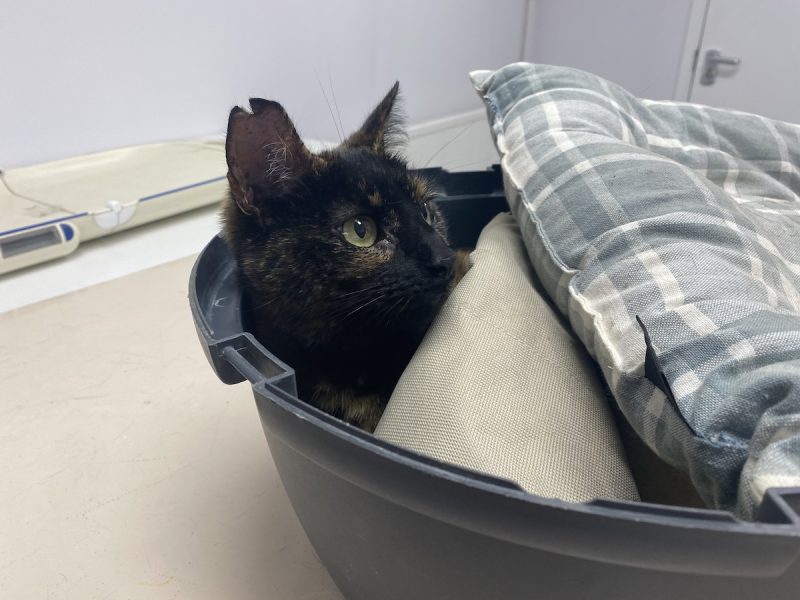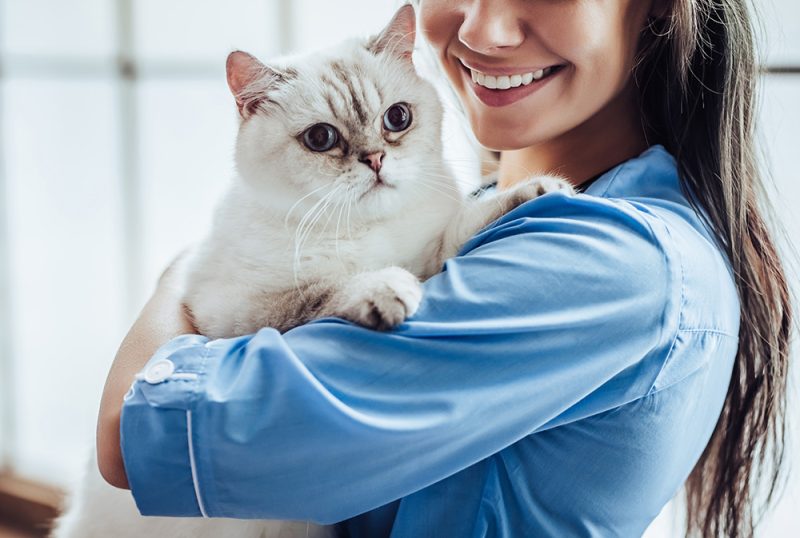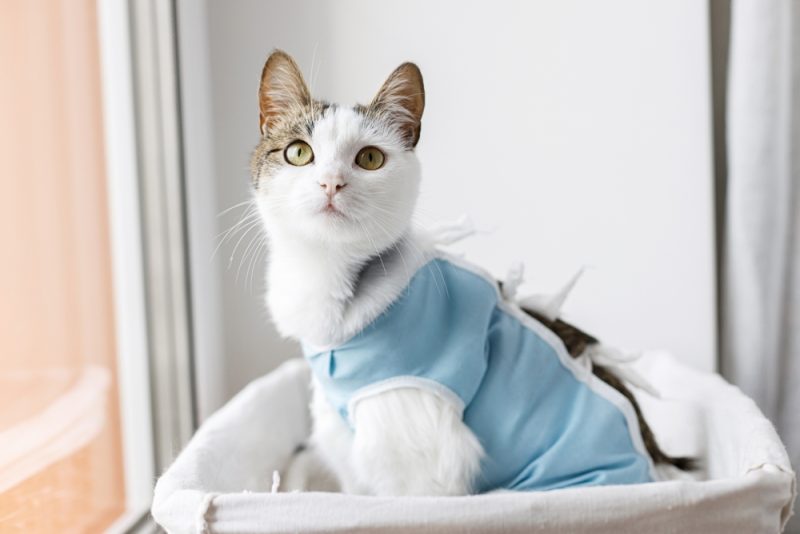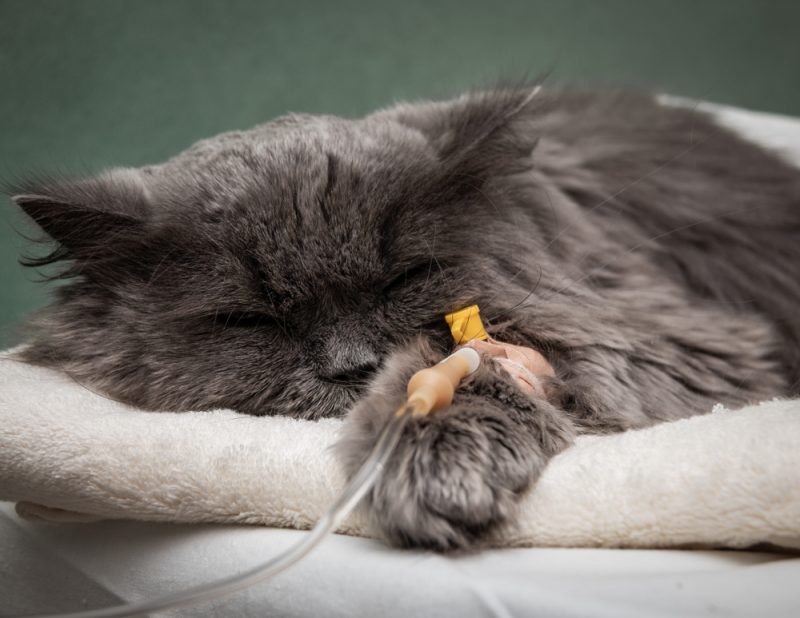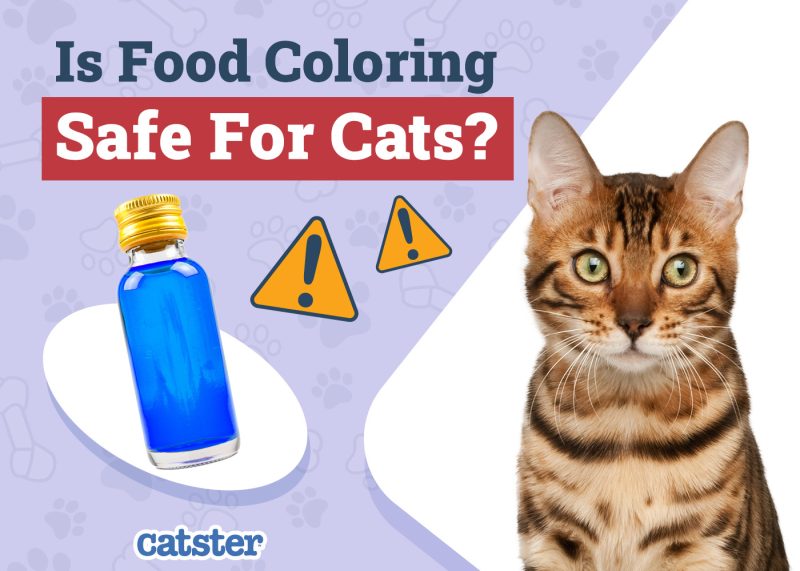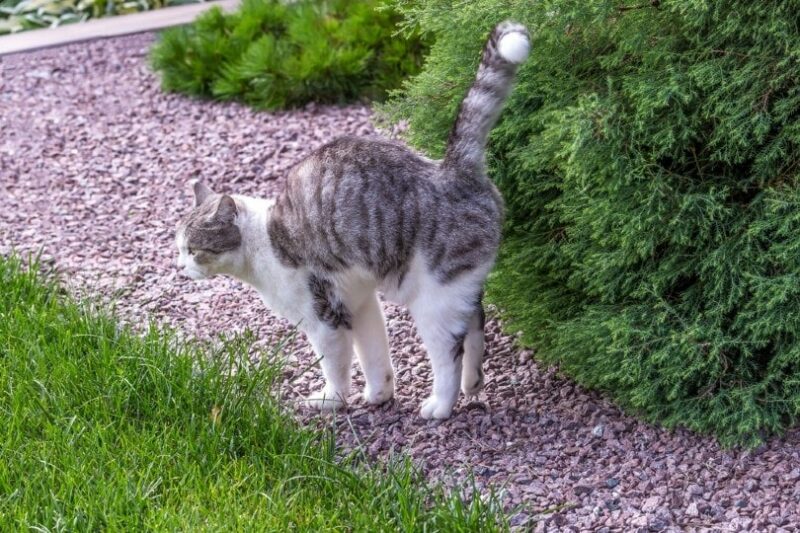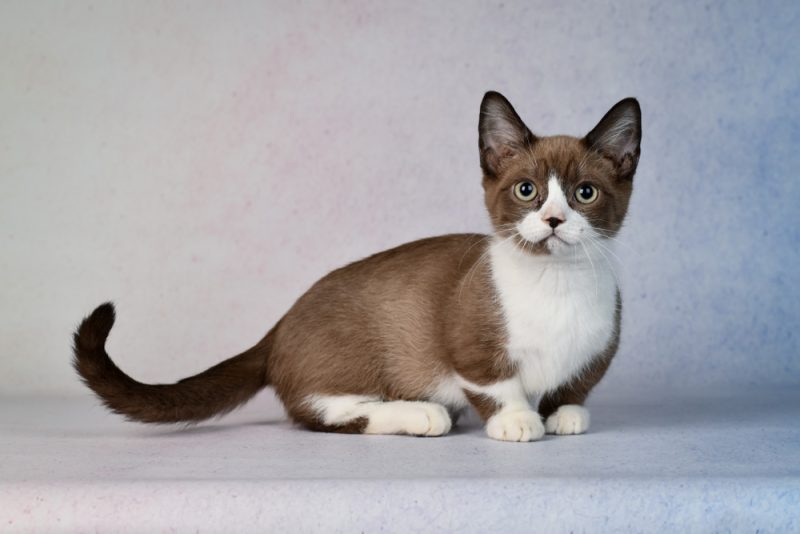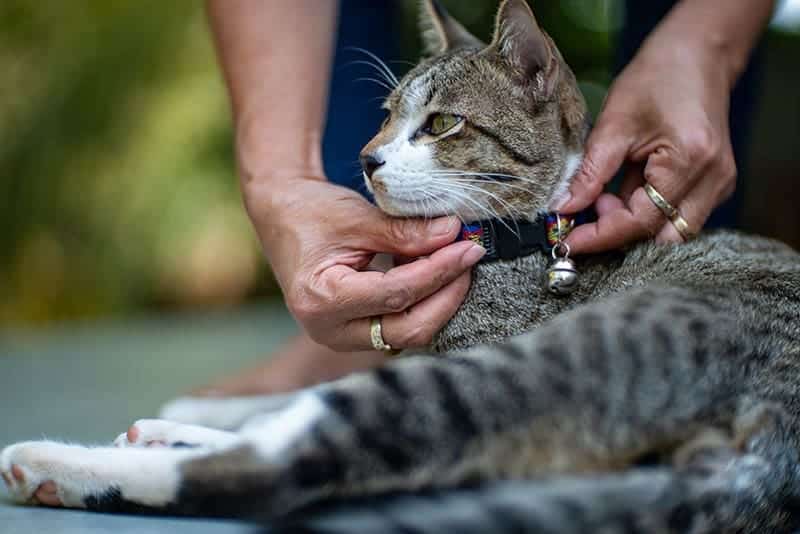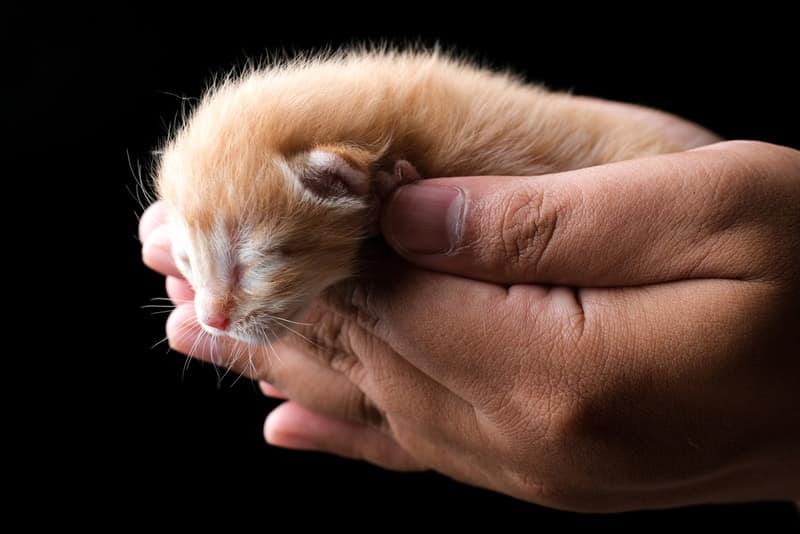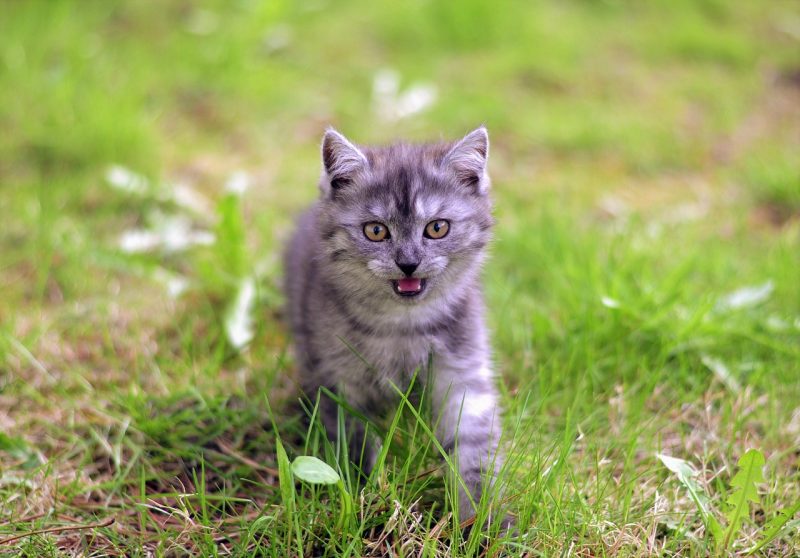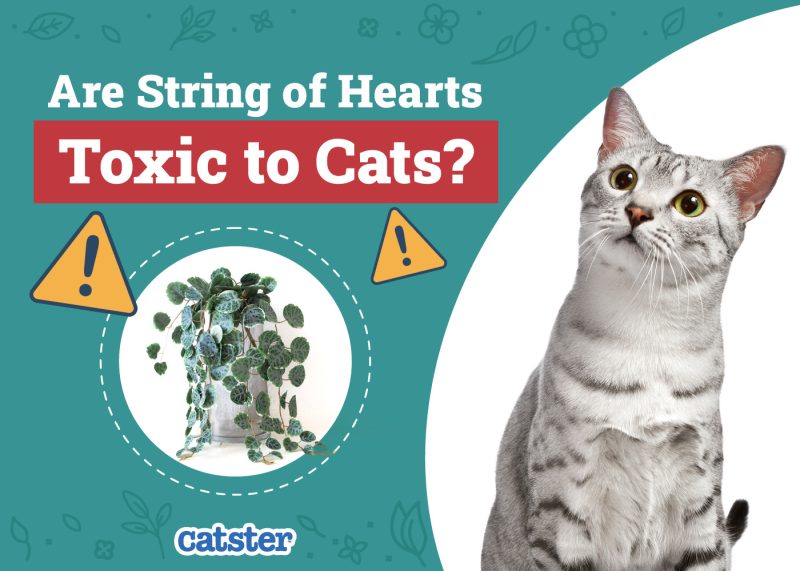In this article
View 8 More +The Jungle Curl is a mix of the American Curl and the African Jungle Cat. These curled-eared hybrids are rapidly gaining popularity due to their wild appearance and affectionate and friendly nature. Jungle Curls are a relatively rare breed due to the difficulty in breeding them, and they are only considered entirely domestic after the fourth or fifth generation.
Breed Overview
Height:
14–25 inches
Weight:
8–25 pounds
Lifespan:
12 to 15 years
Colors:
Tabby, bi-color, or solid variations of black, grey, and brown
Suitable for:
Owners with a great deal of time, patience, and dedication
Temperament:
Intelligent, playful, affectionate, friendly, cheerful, charismatic, adaptable
Jungle Curls can have varying appearances, depending on the combination of parent breeds, but most will have the curled ears typical of the American Curl breed. They can be spotted, tabby, solid-colored, bi-colored, longhaired, or shorthaired, but shorthaired, spotty, or tabby versions are the most favored.
Jungle Curls are a large responsibility due to their wild heritage, and even though they have domestic genes, they still have wild and somewhat unpredictable behavioral traits. If you want to adopt one of these exotic hybrids, read on for more information on this beautiful and wild-looking breed.
Jungle Curl Characteristics

Jungle Curl Kittens
Jungle Curls are a rare breed and take a great deal of experience and expertise to breed. Before buying a Jungle Curl kitten, we highly recommend visiting the parents at the breeder’s home and making sure they are happy, healthy, and well looked after.
Be sure that they have all the relevant paperwork on the lineage of the kittens and that they can inform you of what generation the kitten is. Early socialization is vital for this breed, so the breeder should begin the process before the kittens are released to new homes.
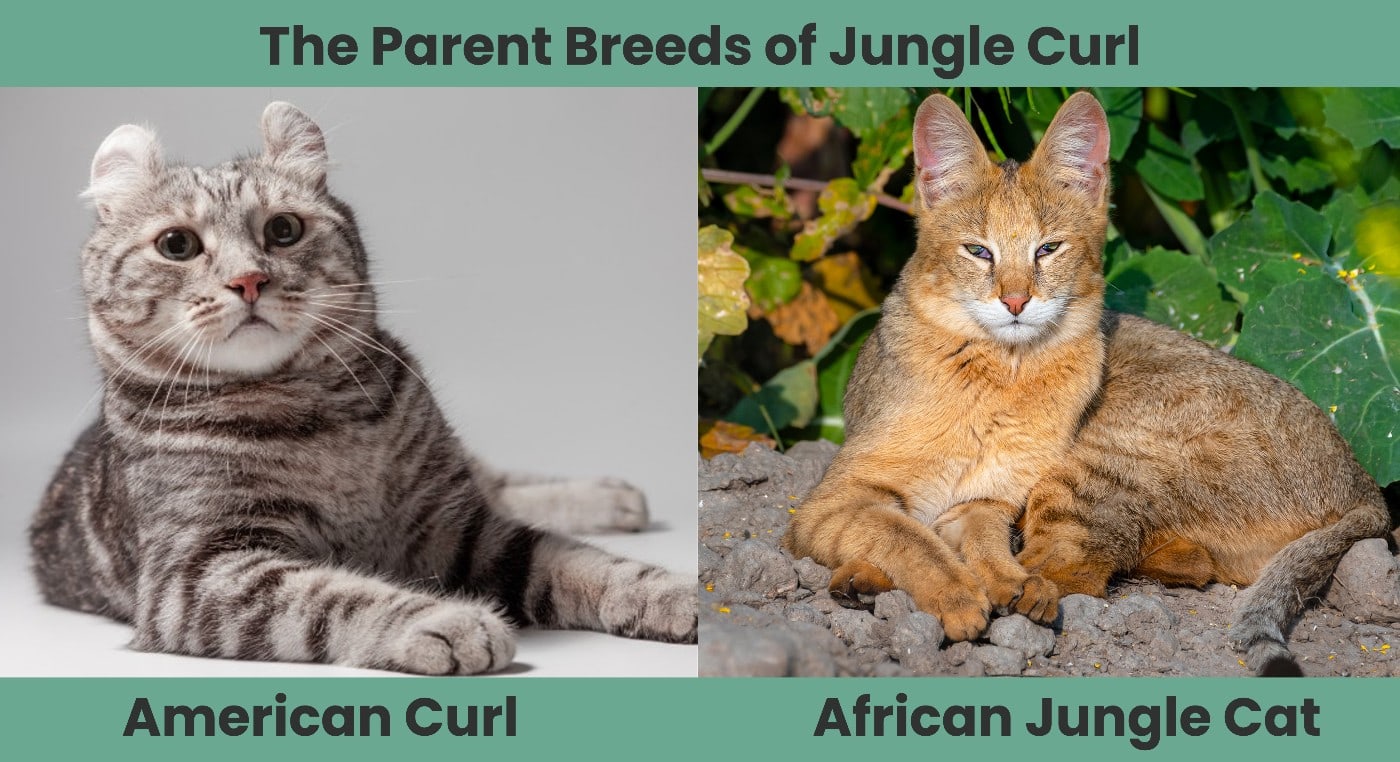

Temperament & Intelligence of the Jungle Curl
The Jungle Curl is an affectionate and loving cat despite their wild heritage. They retain the intellect and appearance of their wildcat ancestors but have the affection and loyalty of a domestic cat. However, they are more agile, playful, and athletic than a typical domestic cat and need attention and exercise to stay happy and healthy. Cat trees are an ideal accessory for them to climb and play on.
Many owners describe Jungle Curls as “dog-like,” and they happily play fetch when given the chance. They love to be close to their owners, and any interactive play is an activity that they’ll relish.
Due to their wild heritage, owners often describe Jungle Curls as more playful and exploratory than domestic cats, and they are exceedingly curious about their surroundings. These cats have plenty of character and are a joy to have around the home.
Are These Cats Good for Families?
Jungle Curls can be family cats, but they do not have as much patience with small children as purely domestic breeds do. They are not usually aggressive but do not enjoy too much handling, and it’s best to teach small kids to let the cat come to them for attention rather than the other way around.
They can act in unpredictable ways at times, and although they can adjust well to family life, they may act defensively toward new faces.
Does This Breed Get Along With Other Pets?
Jungle Curls are generally a friendly breed that gets along well with other cats and dogs if socialized early. Remember that wildcats are solitary creatures, and this trait is inherent in your Jungle Curl, too.
Like most cats, They have a strong prey drive, but with their wild heritage, it is more pronounced. Any small family pets, like rodents, are best kept away from them.
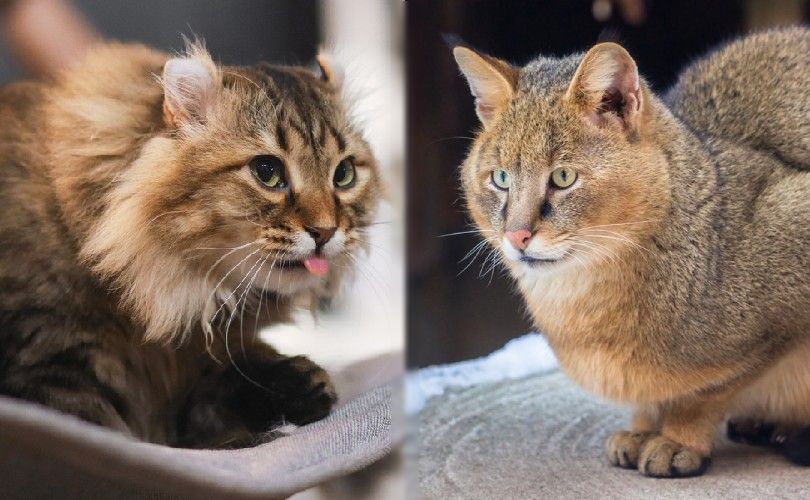

Things to Know When Owning a Jungle Curl
Food & Diet Requirements 
When feeding any breed, protein is of the utmost importance, but it is even more vital with wildcat hybrids like Jungle Curls. All cats, wildcat and domestic, are obligate carnivores, so high-quality protein is the most essential part of their diet.
High-quality dry kibble is excellent, but make sure that the first listed ingredient is an animal-sourced protein, like chicken or salmon, and that there are not too many grains or vegetable proteins in the food. Too many can cause digestive issues in your cat and can cause rapid weight gain, too.
Many breeders and wildcat hybrid owners insist on feeding raw meats to their cats, but there is controversy surrounding the subject, and some owners are uncomfortable doing this. A good ratio would be dry food in the morning with added (cooked or raw) lean meats or canned food in the evening, or vice versa.
Exercise
Exercising your Jungle Curl is important, and they’ll need around 30-60 minutes a day to stay happy and healthy. Interactive play with toys like balls and lasers that stimulate their natural hunting and chasing instincts is ideal and will provide them with the necessary mental and physical stimulation.
A cat tree is a highly recommended investment since Jungle Curls love climbing, and it will keep them endlessly entertained.
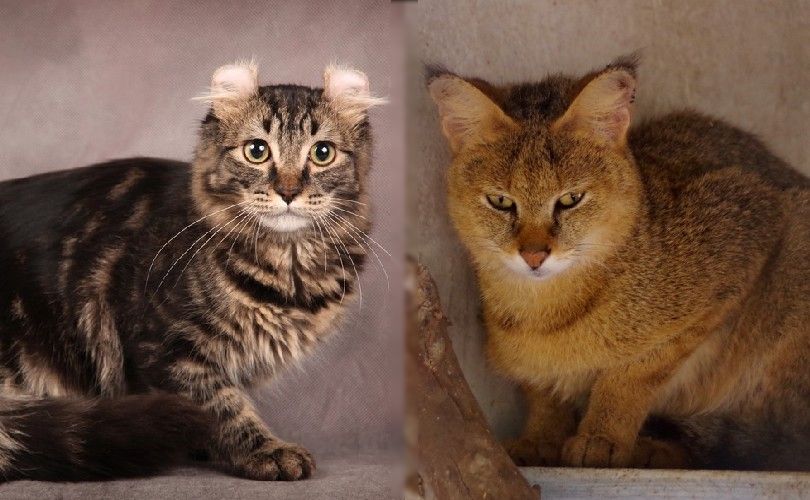
Training
Jungle Curls are highly intelligent cats, and training is not usually a huge issue, but it is more of a challenge than most domestic breeds. These cats are independently minded and prefer to do things on their own terms. Their eagerness for interaction with their owners helps, and you can use that to your advantage during training.
Try to make training sessions as short and entertaining as possible, and positive reinforcement training methods involving toys, treats, and loads of praise are ideal. Early socialization is vital with this breed and will go a long way in helping with training.
Jungle Curls are notoriously difficult to litter train, and intact cats mark their territory by urinating, spraying, and scratching on furniture, and this is a difficult habit to break. They may even urinate along the boundaries of a bedroom, as they would do in the wild to mark their territory!
Grooming ✂️
Jungle Curls have widely varying coats, from thick, long coats to soft and short coats that are easy to care for. If your Jungle Curl has a short coat, grooming is a breeze, and an occasional brushing to remove dead hair is fine.
If they have longer coats, knotting and matting are possible, and they’ll need to be brushed every day to keep it from becoming an issue. Begin brushing them early to get them accustomed to the process, and they’ll likely love it!
Health and Conditions
The Jungle Curl is a naturally healthy breed with a relatively long lifespan, but they have a few health concerns to be aware of. Hypertrophic cardiomyopathy is a condition where the walls of the cat’s heart thicken, decreasing the heart’s efficiency. It is one of the most common cardiac health concerns in cats, whether domestic or wildcat hybrids.
Irritable bowel disease can vary widely in seriousness but can be painful for your cat and even cause chronic diarrhea. This is why a good diet is vital to the health of this breed. Progressive retinal atrophy and luxating patella are other issues to look out for, but they are less common.
- Obesity
- Asthma
- Gingivitis
- Hypertrophic cardiomyopathy
- Irritable bowel disease
- Progressive retinal atrophy
- Luxating patella

Male vs. Female
There are a few critical differences between male and female Jungle Curls to consider before bringing one home. Males are typically bigger than females and far more likely to display territorial behavior. This could manifest in territory marking and occasionally result in aggressive behavior. Males are more likely to attach themselves to one owner, whereas females tend to be more aloof and independent and do not have as much desire for your attention.
We highly recommend spaying and neutering your Jungle Curl since it will mitigate wandering in males and unwanted pregnancies in females. Remember that all cats are individuals, and their personality is far more affected by their upbringing and environment than their sex.

3 Little-Known Facts About the Jungle Curl
1. Jungle Curls Are a Mixture of Several Breeds
Jungle Curls are usually a mixture of an American curl and an African Jungle cat, but other breeds are often involved, depending on the breeder. Some breeders may want to introduce different markings or traits and will mix in other breeds like the Highland Lynx, Hemingway Curl, Chausie, or Jungle Bob.
2. They Are Difficult to Breed
The first generation, or “F1,” is the initial mix of the Jungle cat and domestic cat and results in cats that are still 50% wild. These kittens are then bred with another domestic breed, resulting in the second generation and 25% wild cat kittens.
These are again bred with domestic cats until the fourth or fifth generation when they are considered almost fully domesticated and ready for sale. Males are usually sterile until the fourth or fifth generation, so only female cats can be bred up until this point, making Jungle Curls a difficult animal to breed.
3. Their Curled Ears Are the Result of a Spontaneous Genetic Mutation
The American Curl is well-known for their characteristic curled-back ears, and the genetic mutation responsible for this curling was analyzed by geneticists and found to be a dominant gene. Any cat with just one copy of the gene will have curled ears, so a cross with another breed is 50% likely to have curled ears. If an African Jungle cat is crossed with an American Curl down to the fourth or fifth generation, they are highly likely to have this trait.

Final Thoughts
The Jungle Curl is a uniquely beautiful animal that is a joy to have around the home. Even though these cats have their wild genetics largely bred out by the time they are sold, they still retain a few wild tendencies and behavioral traits, and they can be more of a challenge to look after than a domestic cat.
They are more difficult to train than most domestic cats and can sometimes display unpredictable behavior. They are not ideally suited to families with young children, but with proper socialization, they can adapt well to family life.
If you are up for the challenge of looking after this unique breed, it is well worth it, and they will give back plenty of affection, loyalty, and companionship.
Featured Image Credit by: maxkrapiva, Shutterstock
